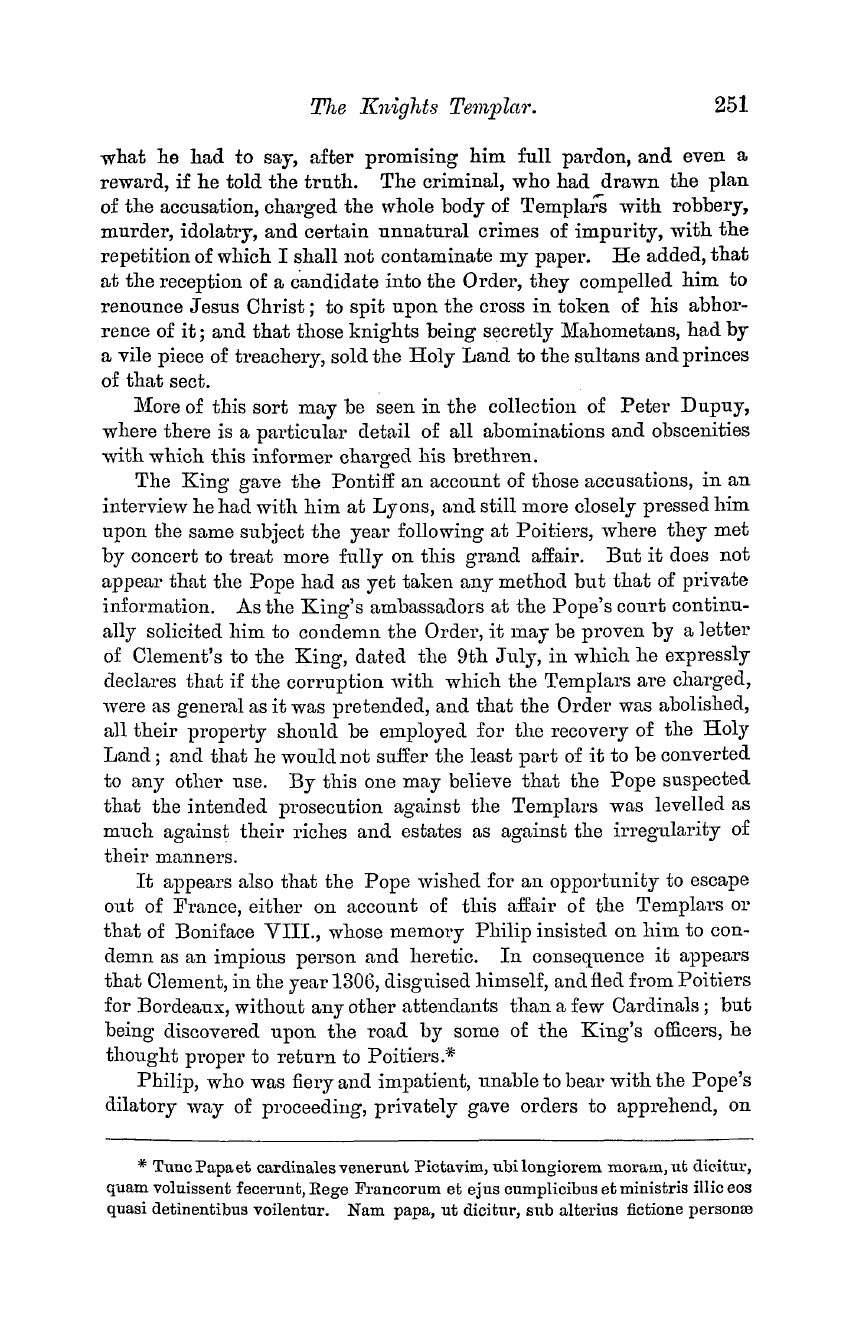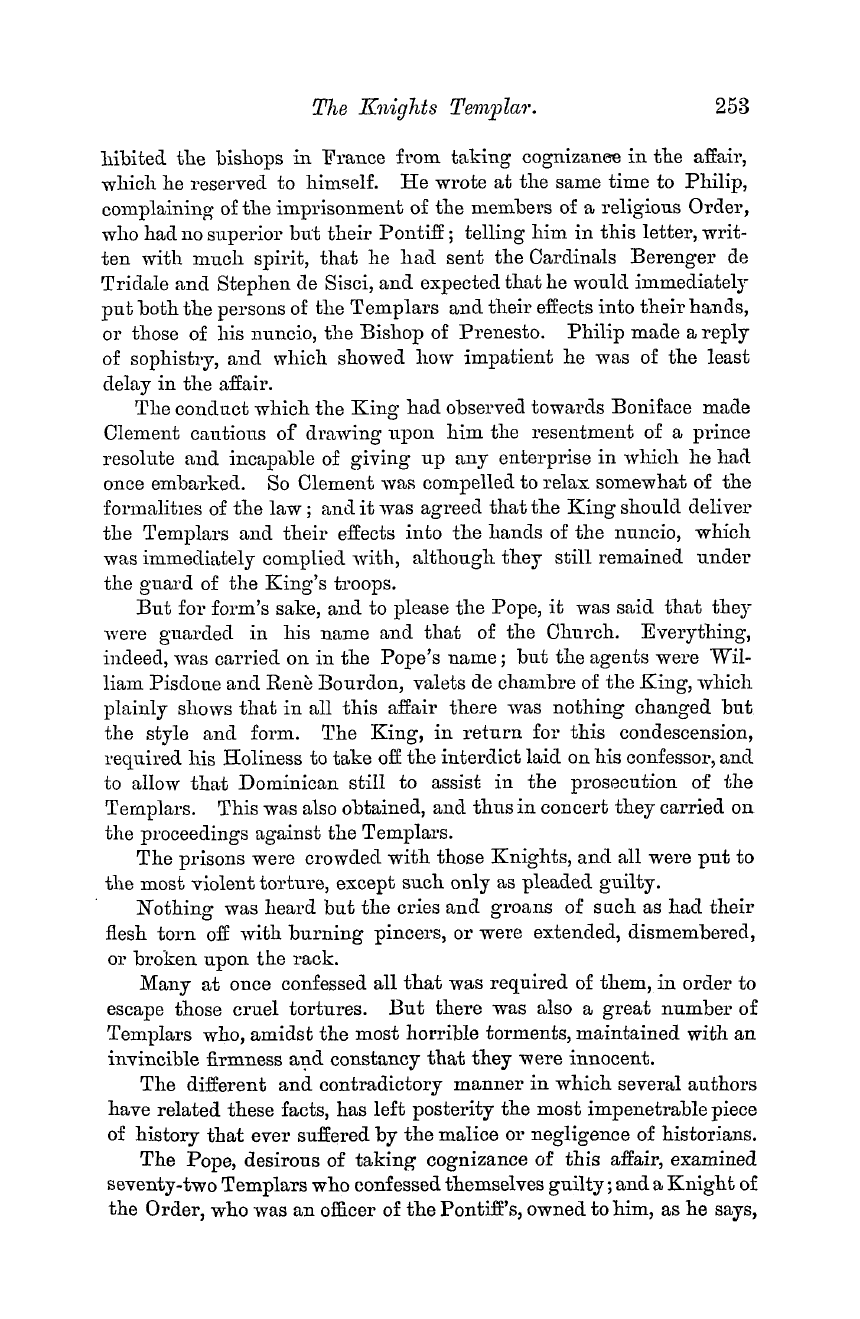-
Articles/Ads
Article EARLY HAUNTS OF FREEMASONRY. ← Page 2 of 5 →
Note: This text has been automatically extracted via Optical Character Recognition (OCR) software.
Early Haunts Of Freemasonry.
days , there are few that still retain so many of its former quaint nooks and corners . As the great highway between the cities of London and Westminster , Fleet Street has always played a conspicuous part in the history of our metropolis , and many a grand or strange eventful scene
has it witnessed . One time , mid all the bravery of flags and banners , one of our sovereigns has made a royal progress through it eastward ; another time , it has looked on pitifully while the fair Eleanor Cobham paced its whole length barefoot , in a white shift , and staggering under a huge wax candle , on her way to the Cathedral of St .
Paul ' s , there to do penance for her supposed connection with witchcraft . Rows innumerable have occurred within its precincts . Thus , in 1458 , a fierce squabble took place between the citizens and the Templars , and the " Queen ' s Attornie" was killed , even the patience of the gentle Henry of Windsor being sorely tried by so untoward
an event . What it was in the days of the first James is known to all readers of "The Fortunes of Nigel , " but some idea of the unruly licence that then prevailed may be gathered from the fact that in 1621 , when three prentices were ordered to be whipped from Aldgate to Temple Bar for having abused Gondomar , the Spanish Ambassador ,
their fellow prentices turned out in full force in Fleet Street and rescued them , the Marshal ' s men being severely beaten and sent to the rightabout . Six years later , when Charles I , was king , a collision occurred between the Templar Lord of Misrule and the Lord Mayor , to the exceeding detriment of the former , who was compelled to pay a
round fine and make good the damage he had done to the bars and bolts of the worthy citizens' domiciles . The pillory stood here in Charles II . ' s time ; while in the days of good Queen Anne it was infested day and night , but especially during the latter , by those terrible fellows , the Mohocks .
Then , many an honoured name in English annals has figured m connection with this ancient thoroughfare , from Chaucer , father of English poetry , who beat a Franciscan friar and was fined two shillings for the offence by the Society of the Inner Temple , to Sir John Oldcastle , Baron Cobham , temp . Henry IV ., who suffered martyrdom for
his religious scruples , and whose house stood near the Fleet Street end of Chancery Lane ; to Richard Pynson , who had worked at Caxton ' s . In 1483 , he published at his stall or shop by St . Dunstan ' s Church his " Dives et Pauper , " the first book ever printed in this neighbourhood ; and in 1497 , an edition of Terence , the first Latin classic printed in
England . Tyndale , translator of the New Testament , did duty as a clergyman in this same church of St . Dunstan ' s , round about which also lived Thomas Marsh , of the Prince ' s Arms , who published "Stow ' s
Note: This text has been automatically extracted via Optical Character Recognition (OCR) software.
Early Haunts Of Freemasonry.
days , there are few that still retain so many of its former quaint nooks and corners . As the great highway between the cities of London and Westminster , Fleet Street has always played a conspicuous part in the history of our metropolis , and many a grand or strange eventful scene
has it witnessed . One time , mid all the bravery of flags and banners , one of our sovereigns has made a royal progress through it eastward ; another time , it has looked on pitifully while the fair Eleanor Cobham paced its whole length barefoot , in a white shift , and staggering under a huge wax candle , on her way to the Cathedral of St .
Paul ' s , there to do penance for her supposed connection with witchcraft . Rows innumerable have occurred within its precincts . Thus , in 1458 , a fierce squabble took place between the citizens and the Templars , and the " Queen ' s Attornie" was killed , even the patience of the gentle Henry of Windsor being sorely tried by so untoward
an event . What it was in the days of the first James is known to all readers of "The Fortunes of Nigel , " but some idea of the unruly licence that then prevailed may be gathered from the fact that in 1621 , when three prentices were ordered to be whipped from Aldgate to Temple Bar for having abused Gondomar , the Spanish Ambassador ,
their fellow prentices turned out in full force in Fleet Street and rescued them , the Marshal ' s men being severely beaten and sent to the rightabout . Six years later , when Charles I , was king , a collision occurred between the Templar Lord of Misrule and the Lord Mayor , to the exceeding detriment of the former , who was compelled to pay a
round fine and make good the damage he had done to the bars and bolts of the worthy citizens' domiciles . The pillory stood here in Charles II . ' s time ; while in the days of good Queen Anne it was infested day and night , but especially during the latter , by those terrible fellows , the Mohocks .
Then , many an honoured name in English annals has figured m connection with this ancient thoroughfare , from Chaucer , father of English poetry , who beat a Franciscan friar and was fined two shillings for the offence by the Society of the Inner Temple , to Sir John Oldcastle , Baron Cobham , temp . Henry IV ., who suffered martyrdom for
his religious scruples , and whose house stood near the Fleet Street end of Chancery Lane ; to Richard Pynson , who had worked at Caxton ' s . In 1483 , he published at his stall or shop by St . Dunstan ' s Church his " Dives et Pauper , " the first book ever printed in this neighbourhood ; and in 1497 , an edition of Terence , the first Latin classic printed in
England . Tyndale , translator of the New Testament , did duty as a clergyman in this same church of St . Dunstan ' s , round about which also lived Thomas Marsh , of the Prince ' s Arms , who published "Stow ' s































































